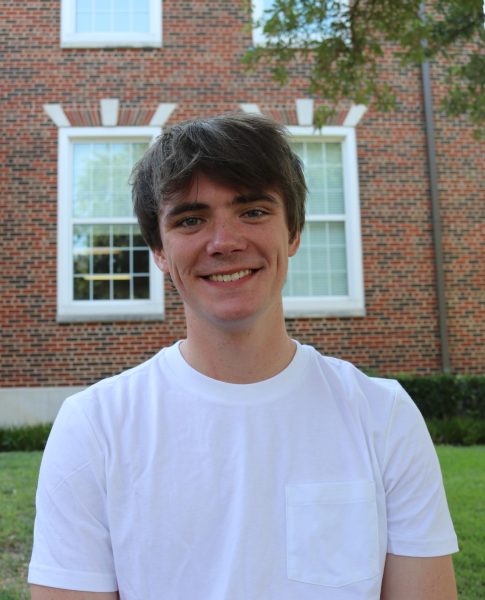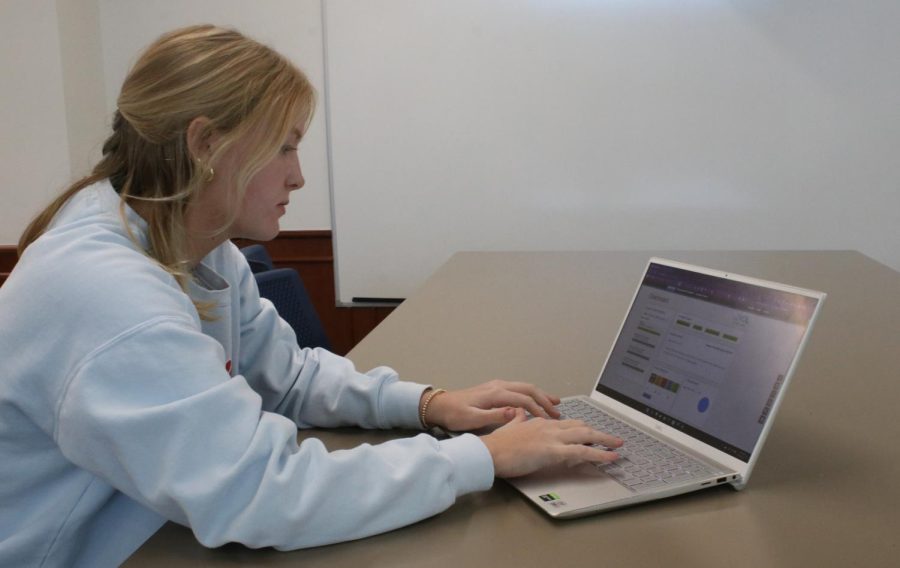X2Vol Changes for the Better
New leadership hopes to ease X2Vol anxieties
Senior Lawler Carpenter logs service hours in the atrium. She feels the program X2Vol is too complicated and difficult to work with. “It just makes submitting service hours so much harder than it should be,” she said.
It’s almost guaranteed that if you mention service hours to a group of HP students, at least one of them will groan.
The beginning of the school year has brought about a new generation of students who need to learn the ins and outs of X2Vol. Originally, service hour acceptance was run by John Hinton, and the criteria for what was accepted was strict.
“It was pretty tough, and a lot of the time it was more complicated than it needed to be,” senior Ethan Burt said.
Recently, though, transition specialist Tyson Peterson took the reins of this process, making it considerably easier for students to submit service hours, one of the largest ones being the removal of limitations on what counts as community service.
“With the previous people that did the service hours, if you volunteered at a dance studio, that didn’t count because, you know, it wasn’t a nonprofit,” Peterson said. “So, we changed that up because that’s still volunteering and a great way to give back to our community.”
Most of these changes came about because of COVID-19, as the new conditions made it much harder for students to provide service through labor.
“COVID-19 changed a lot of it,” he said. “Some of the things that we never thought about before COVID-19, like writing letters to people and doing digital stuff for organizations, we had to rework a lot of the system to accommodate for that.”
Unfortunately, many HP students are unaware of this change and remain frustrated with the service hour process.
“To be honest, it took me a while to realize that something had actually changed,” sophomore Harrison Norris said. “The reason being that I didn’t really submit many service hours in my sophomore year, so I kinda just assumed that it was just as poorly set up as before.”
This lack of awareness means that Peterson has had to deal with many unwarranted complaints regarding service hours that were denied for valid reasons.
“When you get your hours denied, usually it’s because your verification person didn’t verify your hours,” Peterson said. “If the verification doesn’t get to the person that’s trying to verify it, though, that’s when they can personally email me.”
In the end, though, Peterson has noticed a drastic increase in the amount of positive feedback that has been received regarding service hours, showing a clear improvement in the system from the student-body side.
“I think kids are excited to finally get their hours accepted and approved earlier than later,” he said. “They had a different setup of how they approved the hours; I, on the other hand, do it daily. Because I go through and approve those hours every day after school for 30 minutes, it’s a lot simpler in all respects.”

His Dark Materials, Game of Thrones, Dead Poets Society, and Puss and Boots 2
Who are your favorite music artists?
Sublime, Third Eye Blind, Kendrick, and Cage The Elephant
What causes are you passionate about?
I am extremely passionate about all things related to the environment



